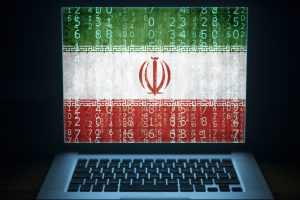Ecbatana, known locally as Hegmataneh, stands as a testament to the rich history of Iran. This ancient city, believed to be one of the oldest in the country, holds within its ruins tales of conquest, intrigue, and cultural exchange. Let’s embark on a journey through time and space to uncover the secrets of Ecbatana.
Historical Significance
Ecbatana, which is now modern-day Hamadan, was once the capital of the mighty Median Empire. This empire, flourishing around the 6th century BC, marked the rise of an influential civilization that thrived in what is now Iran. Ecbatana served as the splendid capital of the Medes, showcasing their power and cultural sophistication.
The city’s significance doesn’t end with the Medes. It played a pivotal role in the subsequent Persian Empire established by Cyrus the Great. As the first Persian Emperor, Cyrus incorporated Ecbatana into his dominion, making it an important administrative center. The city’s strategic location along the Silk Road also contributed to its importance, as it became a hub for trade and diplomacy between the East and West.
Architectural Marvels
Ecbatana’s architectural prowess was renowned in antiquity. The city was said to have been enclosed by seven concentric walls, each constructed with a different color, symbolizing the seven noble houses of the Medes. The grandeur of Ecbatana’s architecture was further emphasized by its splendid palaces, gardens, and temples.
Among the most remarkable structures was the Palace of Darius, where the Persian king Darius the Great reportedly received his subjects and foreign dignitaries. The palace was adorned with intricate carvings and sculptures, showcasing the artistic skill of the time.
Cultural Exchange
Ecbatana was a melting pot of cultures. As the capital of an empire that stretched across vast territories, it attracted people from various ethnic backgrounds. This cultural diversity influenced art, cuisine, and daily life in the city. The exchange of ideas and traditions enriched Ecbatana’s cultural tapestry.
The city’s location along the Silk Road also played a crucial role in fostering cultural exchange. Traders and travelers passing through Ecbatana brought with them goods, ideas, and innovations from distant lands. This cross-cultural pollination left an indelible mark on the city’s identity.
Decline and Rediscovery
Like many ancient cities, Ecbatana eventually fell into decline. The rise of other Persian capitals, such as Persepolis and Susa, led to the diminishing importance of Ecbatana. The city was also subject to numerous invasions, including those by Alexander the Great and the Arab conquerors, which further contributed to its decline.
Over time, Ecbatana was forgotten, buried beneath the sands of history. However, its memory endured through the writings of ancient historians and travelers. In the 19th century, archaeologists began to unearth the remnants of this once-magnificent city, piecing together its history and significance.
Preservation and Modern Significance
Today, Ecbatana, or Hegmataneh as it is known locally, stands as an archaeological site of immense historical value. The excavations have revealed glimpses of its former glory, including the remnants of palaces, temples, and defensive walls. These findings provide a tangible connection to Iran’s rich past and offer valuable insights into the civilizations that once thrived here.
Efforts are underway to preserve and protect this historical treasure. Museums in Hamadan house artifacts unearthed from the site, allowing visitors to explore the city’s history and cultural heritage. Furthermore, Ecbatana’s historical significance has earned it a place on Iran’s tentative list for UNESCO World Heritage status, a recognition that would further highlight its importance on the global stage.
Last Word
Ecbatana, or Hegmataneh, is not just a collection of ancient ruins; it’s a portal to a bygone era when powerful empires ruled the land, and cultural exchange flourished. Its historical significance, architectural marvels, and role in shaping Iran’s cultural identity make it a place of enduring importance. As efforts to preserve and study Ecbatana continue, it remains a testament to the enduring power of history and the human spirit’s ability to leave a lasting mark on the world.
Let us know your ideas and comments about Hegmataneh in the comment box below, we will be happy to hear from you!


















